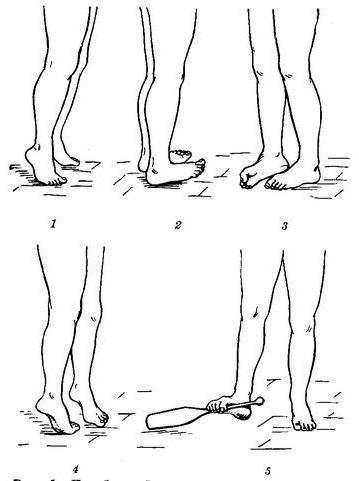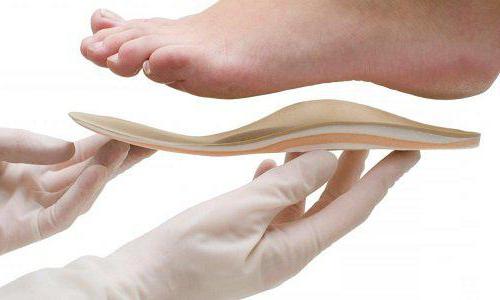Often children have flat feet, which has a negative effect on the whole body. It must be treated. The most effective way to do this is through exercise. What exercises will help get rid of flat feet, read the article.
What is flat feet?
This is a disease in which the arches of the foot flatten. At the same time, the mechanics of walking are disturbed and complications develop in the joints of the knees, hips and spine.
Flat feet (deformation of the foot) can be observed in children from the moment of birth. The statistics are disappointing. By the age of eleven, half of the children suffer from this disease.
Causes of flat feet
It is impossible to clearly name at least one reason. The development of flat feet is influenced by various factors:
- Hereditary predisposition.
- Overweight.
- Excessive load on the lower limbs. First of all, these are sports that require a lot of effort.
- Weakness of the muscles and ligaments of the foot, which is transmitted to the child from the parents.
- The consequences of diseases such as cerebral palsy, polio, rickets, which cause paralysis of the muscles and ligaments of the foot.
- Injuries of varying degrees.
Signs of flat feet
Since parents are in close contact with their children, they may notice some changes when walking, or the child will tell about it himself. Symptoms may be as follows:
- Clubfoot during movement, when the child tucks his feet inward.
- It does not come on the whole foot, but only on its inner edges.
- The child refuses long walks. This is explained by the fact that he has pains in his legs and back when he walks.
- The surface of the heels is uneven when wearing shoes, that is, they get stuck unevenly: there is much more on the inside.
If the child has at least one of these signs, you should consult a doctor.
Foot without pathology
The physiology of the structure is such that, normally, the foot should rest on three points located in the area of the little finger, thumb and heel. These points are connected by ligaments, muscle tissue and tendons, which are combined into arches. Depending on the location, arches are:
- Longitudinal - pass along the edge of the inner side of the foot.
- Transverse - connect the base of the thumb and little finger.
When the disease begins to develop, flattening of the arches occurs. The feet with flat feet in this case have a different fulcrum, which becomes the middle part of the sole.
Longitudinal flat feet
This is a disease in which the height of the corresponding arch is reduced. Often there is longitudinal flatfoot in preschool children. Parents can suspect him when examining the baby's legs. The skin on them should be pale pink. If it becomes crimson-cyanotic, it means that venous stasis has formed in the feet. Just pale skin, without a pink tint, means that there is poor blood circulation in the feet. In any case, contacting a doctor should be immediate.
Flat feet in young children
Often the fullness of a one-year-old child does not cause anxiety in parents. For some reason, there is an opinion that all babies should be chubby. However, this is not at all true. If the baby, after the first year of life, weighs more than twelve kilograms, and his feet are tucked in while walking, you need to see an orthopedist.
It is important not to miss a disease such as flat feet. In the year of life, this is not so noticeable, everything is attributed to children's age, especially since the baby does not feel much concern. But as the child grows, his body mass increases, which can lead to the progression of the disease: the arches will become more flattened. In the future, with slight physical exertion or prolonged walking, pain will appear in the ankle joints, lower back, knees.
You can correct flat feet with the help of physiotherapy exercises, massage, orthopedic shoes, arch support, physiotherapy and surgery. Which treatment method to use depends on the stage of the disease, which only a doctor can determine.
Therapeutic exercises for babies
Acquired flat feet is treated conservatively. If the child has not yet walked on his own, exercises help parents to do. Simple and painless flexion and extension of the feet helps to correct the incorrect location of the arches, while the feet are directed to the sole and back. As for the outer edge of the foot, it goes inward.
When the child grows up a little and will already stand steady on his legs, you need to show him the following set of exercises with longitudinal flat feet in children:
- Walk on toes and heels, and barefoot.
- Try to move the edges of the feet: either internal or external.
- Scatter many small objects on the floor, and let the child collect them with his toes.
- Gymnastics stick is a simple and at the same time very useful apparatus. It is necessary to teach the child to walk on it.
A set of exercises for preschoolers
When a child turns two or three years old, a whole range of exercises can be performed to treat flat feet. A child even of the youngest preschool age can easily withstand such a load. Exercises for flat feet in children are as follows:
- Walking with shoulders back and hands on the belt. But you need to walk not with the whole foot, but with its outer edges.
- This exercise is performed while sitting with legs straight forward. Toes need to be squeezed and unclenched alternately.
- Sitting on the floor, bend your legs, and then start to lower and raise your feet.
- To bring socks, not taking off at the same time from a heel floor.
- In a sitting position, roll the ball alternately with one foot or two.

- Throw small objects on the floor. The essence of the exercise is to grab the object with your fingers and move it to another place.
- Lying on your back stretch your legs forward. To make sliding movements with the sole on the opposite foot.
- Lie on your back, legs apart and clap soles.
- Lie on your back, hold the ball tightly in your feet, raise your legs up, bend your knees to your chest and make the ball move in a circle.
- Lie on your stomach, bend your legs, grab the socks with your hands, press the heels to the buttocks, while pulling the socks out.
- In a standing position, grab a chair and roll from heel to toe, simulating walking. Do not tear off socks from the floor.
- The last exercise is jumping on the legs: first on the left, then on the right.
With flat feet, it is very important to perform exercises both single and in combination. Classes should be daily, and not episodic, from time to time.
Gym using a massage mat
Exercises with flat feet in children are different. The category of physiotherapy exercises includes classes using a massage mat, on the surface of which there are bumps of various origins. They irritate the sole of the foot, thereby strengthening the muscles.
Exercises for flat feet in children are performed using other devices. These, in addition to rugs, include balls and various rollers, the surface of which has many soft spikes. Gymnastics devices are designed to be kicked. Parents show the child the correctness of the exercises.
Massage
Flat feet are also treated with massage. Depending on the degree of the disease, the child is prescribed a course of treatment, which includes ten to fifteen sessions. In a year you need to go from two to four such courses. Features of the massage are that, in addition to the feet, all legs are completely massaged, as other muscles are involved in walking: the lower legs, thighs and buttocks.
Preventive measures to prevent flat feet
Any disease is better to prevent than to treat for a long time. For the correct formation of the bend of the foot, you need to often walk without shoes on a hilly surface. It is more accessible to the villager. In the city it is very rare to find a road whose surface is paved with pebbles. All asphalt and tiles. And in apartments - laminate flooring and parquet. There are few options for preventative measures, but they are. Here are some exercises for flat feet in children (suitable for prevention):
- First of all, you need to balance the nutrition of the child so that the right amount of animal and vegetable proteins enters his body.
- A small child should often be placed on the ground with an uneven surface: sand, grass, wooden slides.
- Since the apartment has perfectly even floors, you need to make their surface bumpy. To do this, just sprinkle small nuts, put them in a bag of soft cloth, and that's it. The kid happily jumps on such a floor. If you do not want to bother, you can purchase an orthopedic rug.
- It is better to buy shoes with arch support for the baby. This is a preventive insert in shoes, thanks to which the foot is delicately formed.

All of the above measures are good, but there are the simplest exercises for the prevention of flat feet. The following is considered the most common and effective today. The gymnastic stick falls to the floor, a barefoot baby is placed on it, who must move along it sideways, taking extra steps. Such walking of a child is taught by adults. The stick should lie across the foot. Exercise helps strengthen the muscles of the foot.